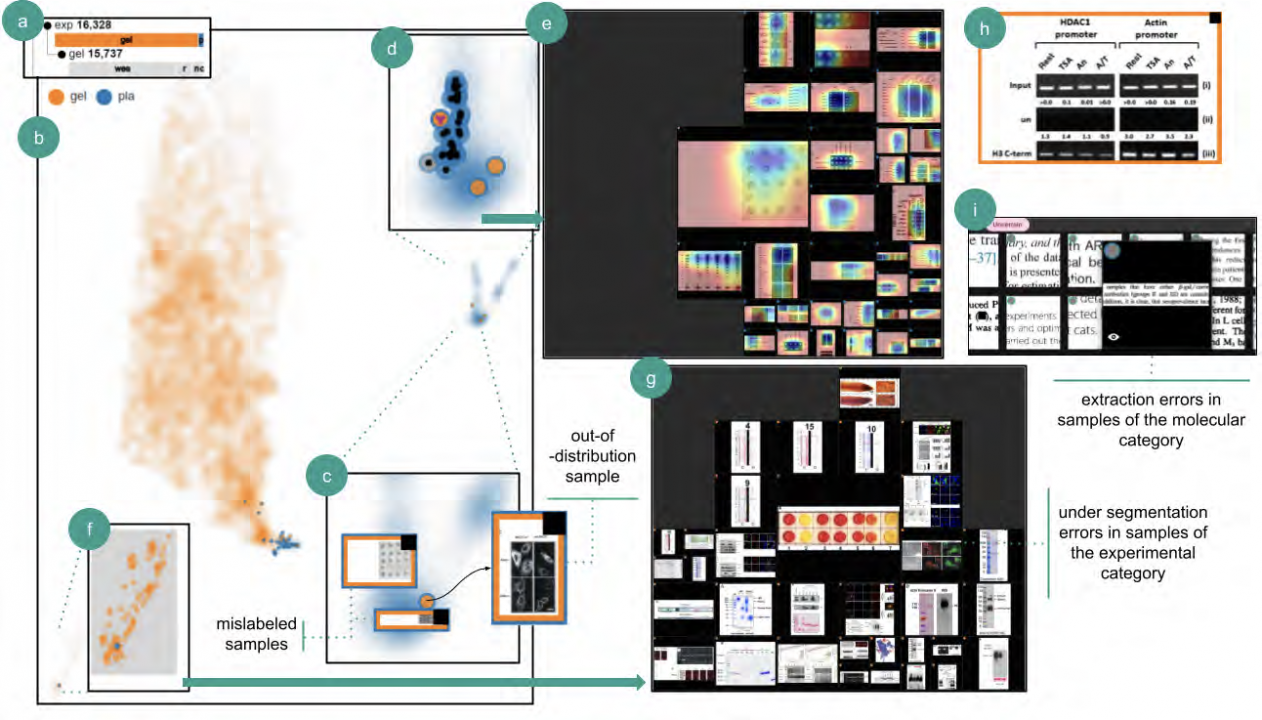|
|
||||||||||||||||||
BI-LAVA: Biocuration with Hierarchical Image Labeling through Active Learning and Visual Analytics
Authors: Trelles, J., Wentzel, A., Berrios, W., Shatkay, H., Marai, G.E.
Publication: Computer Graphics Forum 2024, pp. 1-15 In the biomedical domain, taxonomies organize the acquisition modalities of scientific images in hierarchical structures. Such taxonomies leverage large sets of correct image labels and provide essential information about the importance of a scientific publication, which could then be used in biocuration tasks. However, the hierarchical nature of the labels, the overhead of processing images, the absence or incompleteness of labeled data, and the expertise required to label this type of data impede the creation of useful datasets for biocuration. From a multi-year collaboration with biocurators and text-mining researchers, we derive an iterative visual analytics and active learning strategy to address these challenges. We implement this strategy in a system called BI-LAVA—Biocuration with Hierarchical Image Labeling through Active Learning and Visual Analytics. BILAVA leverages a small set of image labels, a hierarchical set of image classifiers, and active learning to help model builders deal with incomplete ground-truth labels, target a hierarchical taxonomy of image modalities, and classify a large pool of unlabeled images. BI-LAVA’s front end uses custom encodings to represent data distributions, taxonomies, image projections, and neighborhoods of image thumbnails, which help model builders explore an unfamiliar image dataset and taxonomy and correct and generate labels. An evaluation with machine learning practitioners shows that our mixed human-machine approach successfully supports domain experts in understanding the characteristics of classes within the taxonomy, as well as validating and improving data quality in labeled and unlabeled collections. CCS Concepts: Human-centered computing -> Visual analytics; Computing methodologies -> Machine learning algorithms Date: September 22, 2024 Document: View PDF |